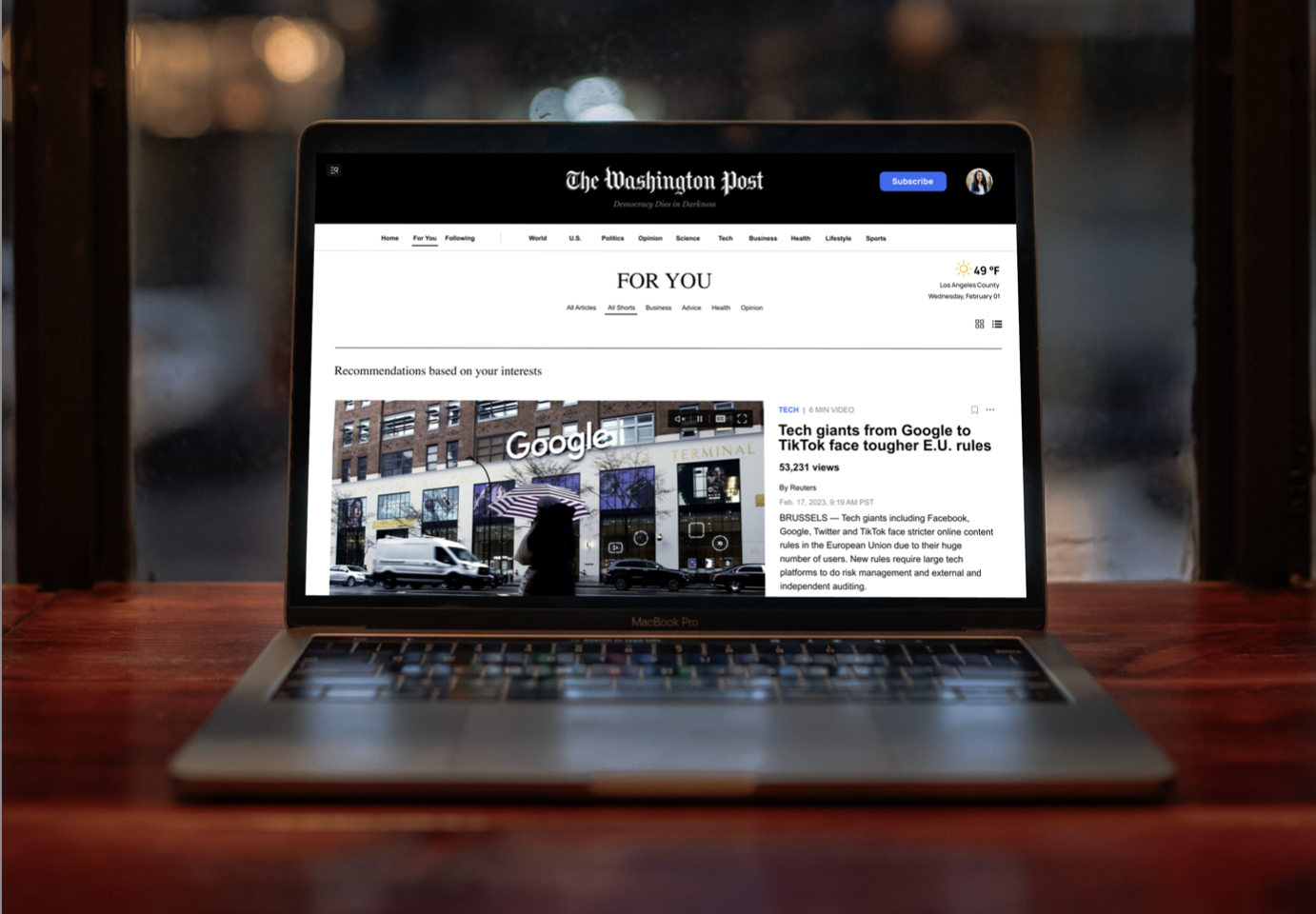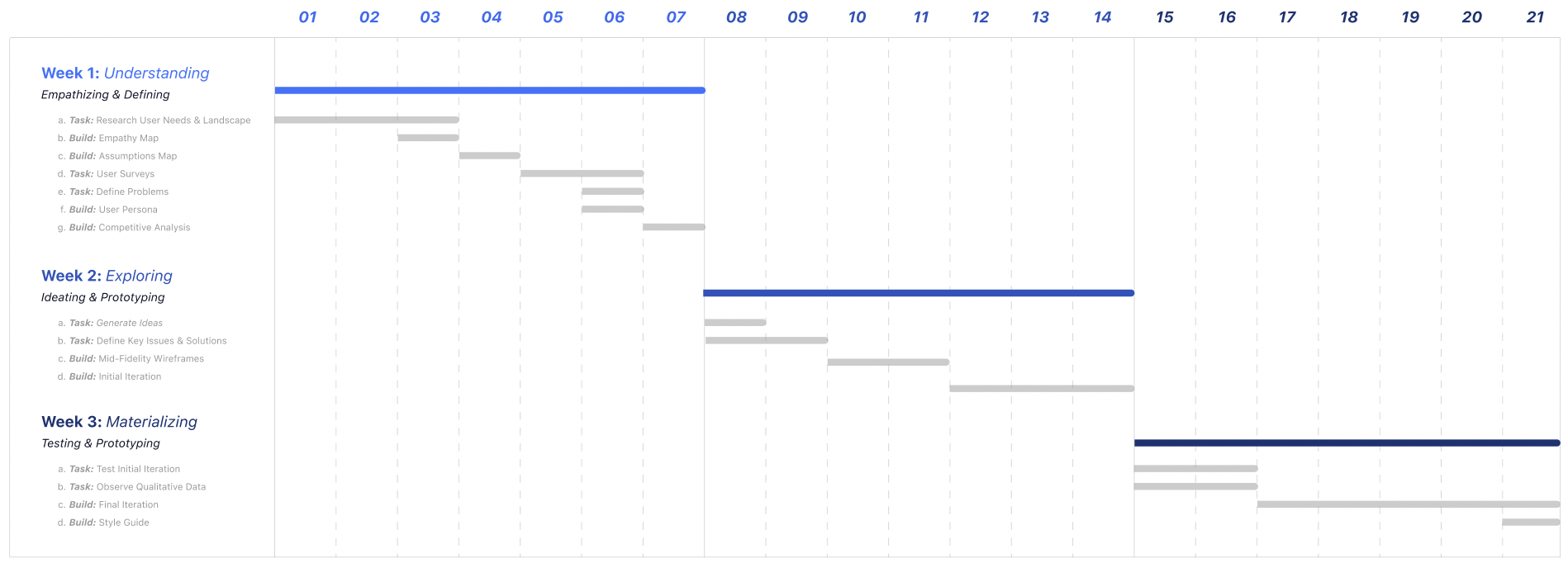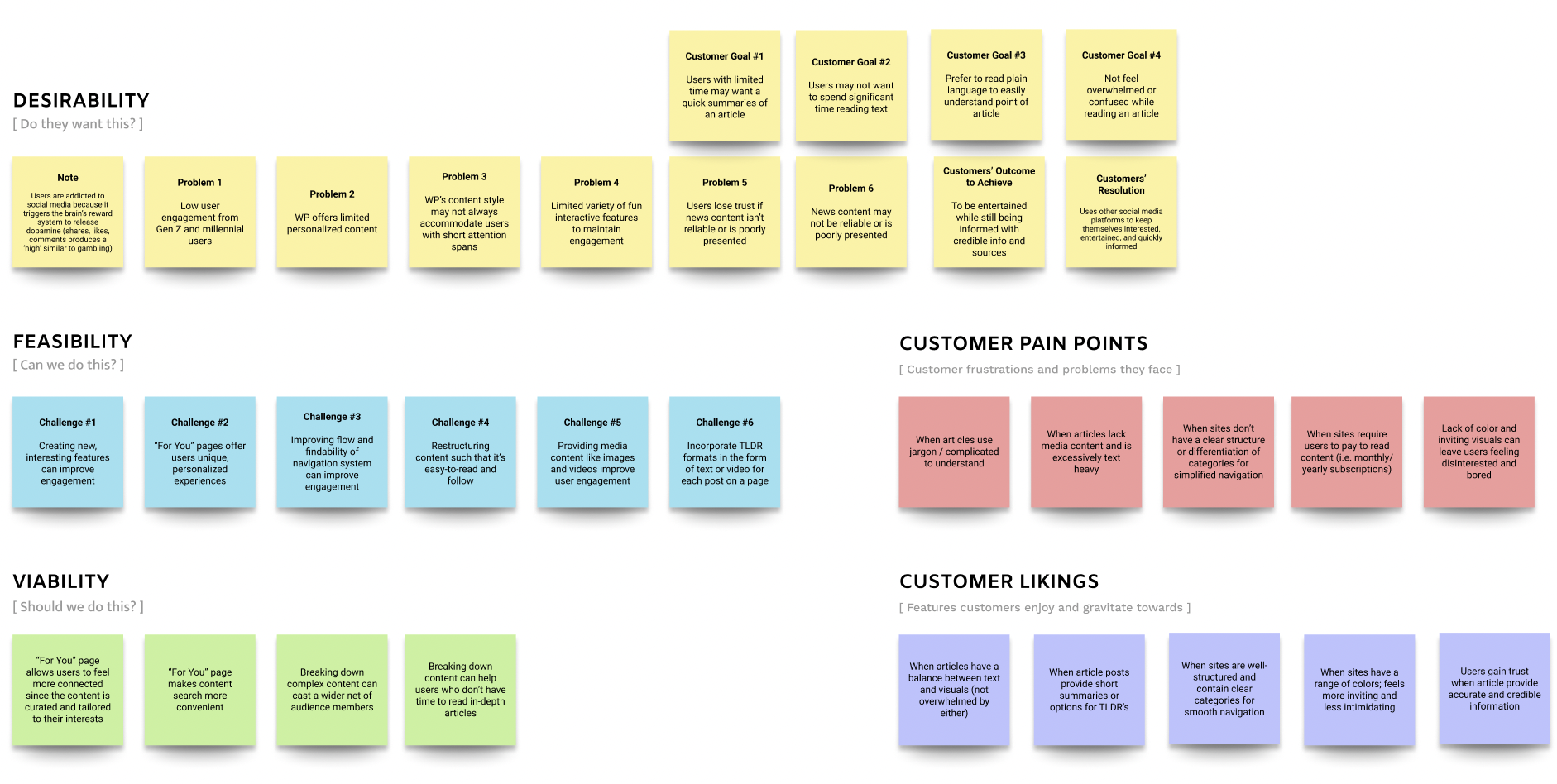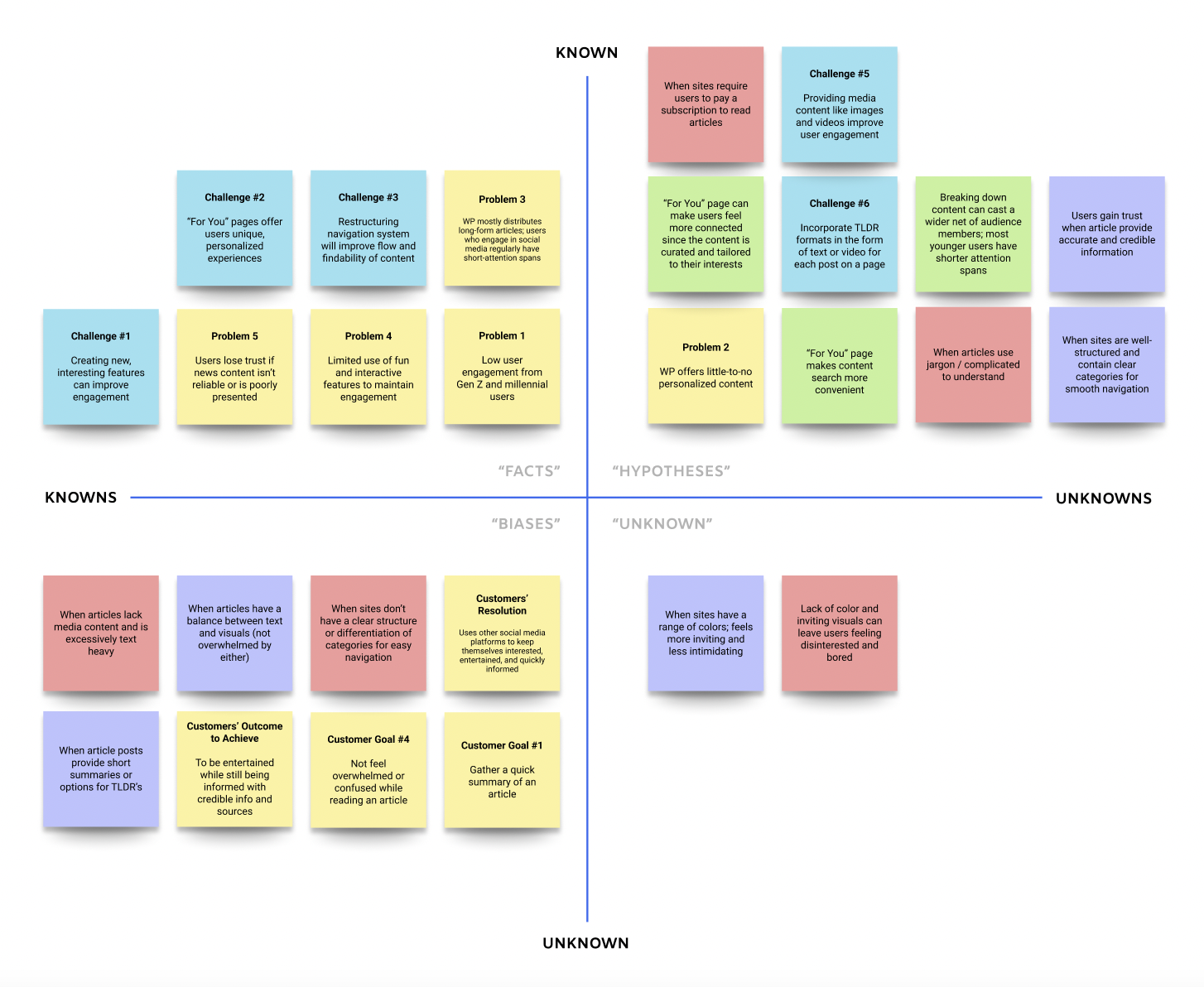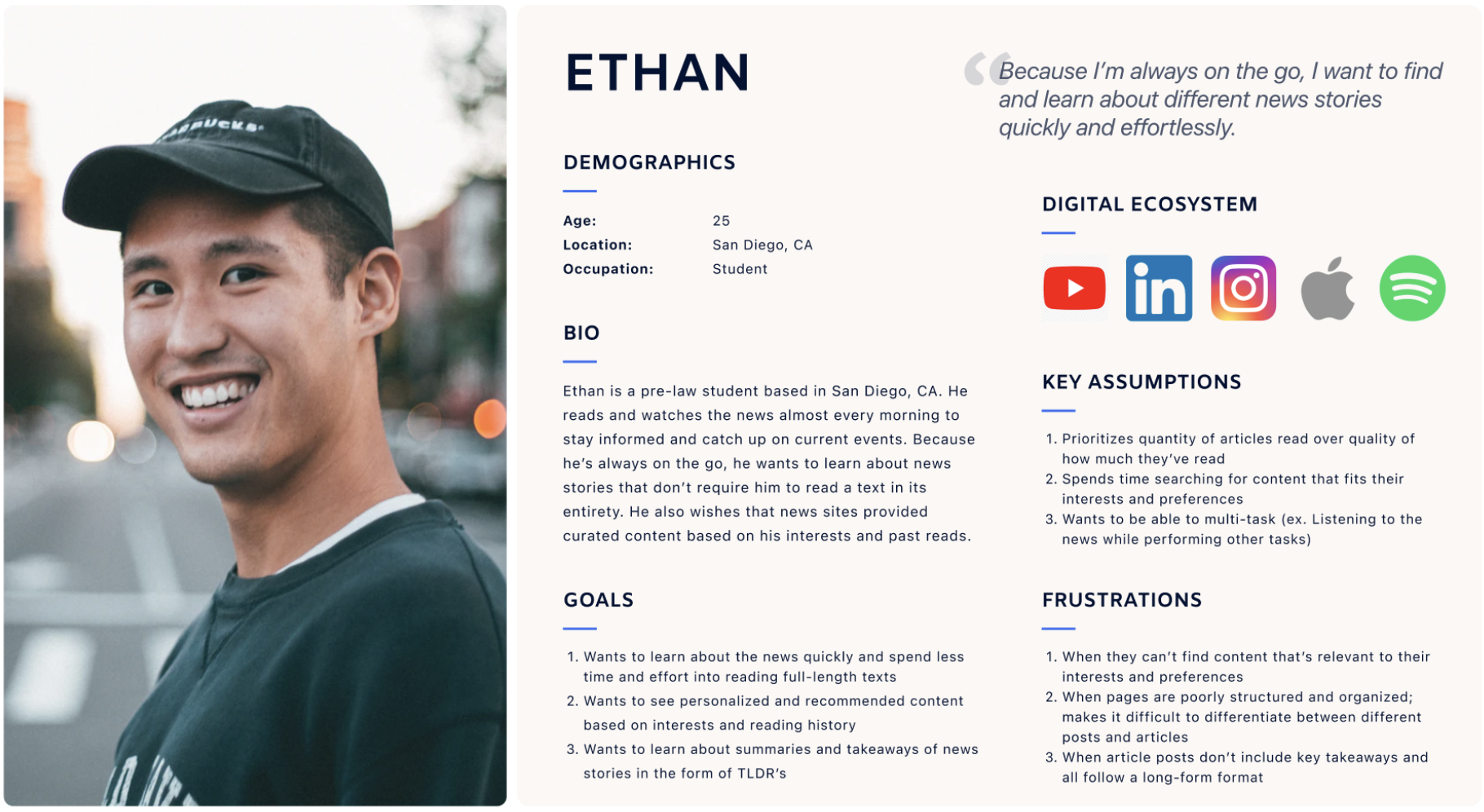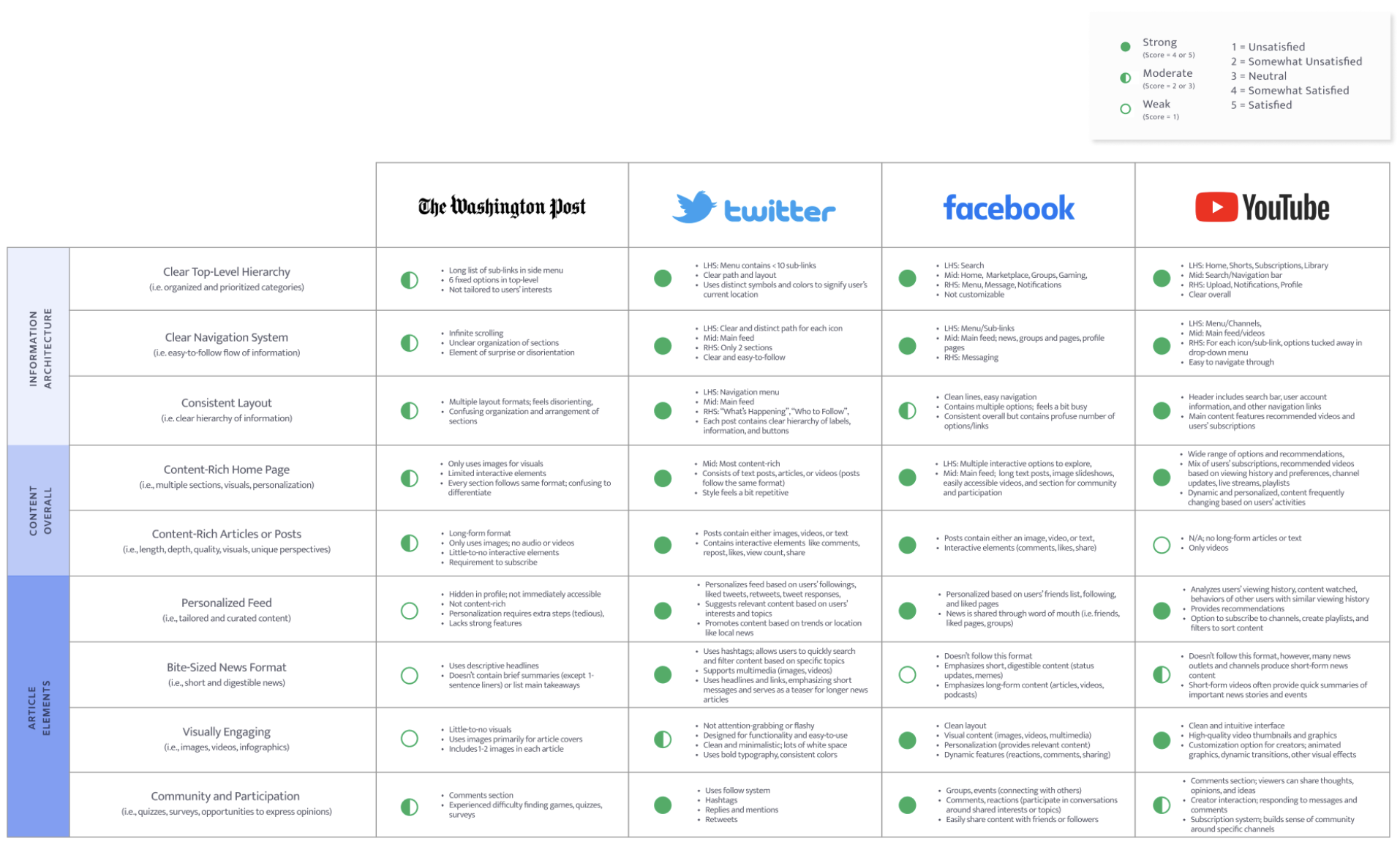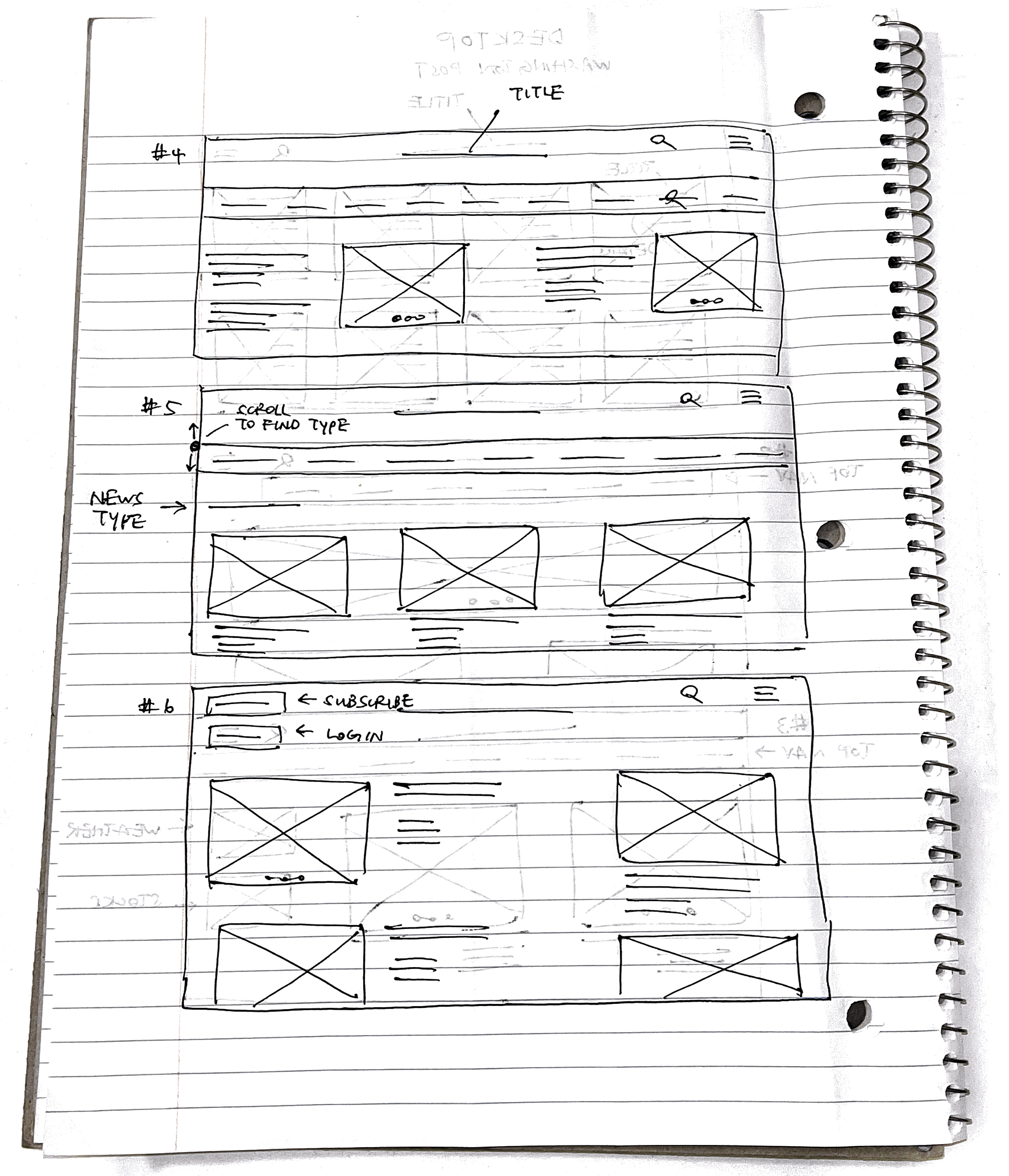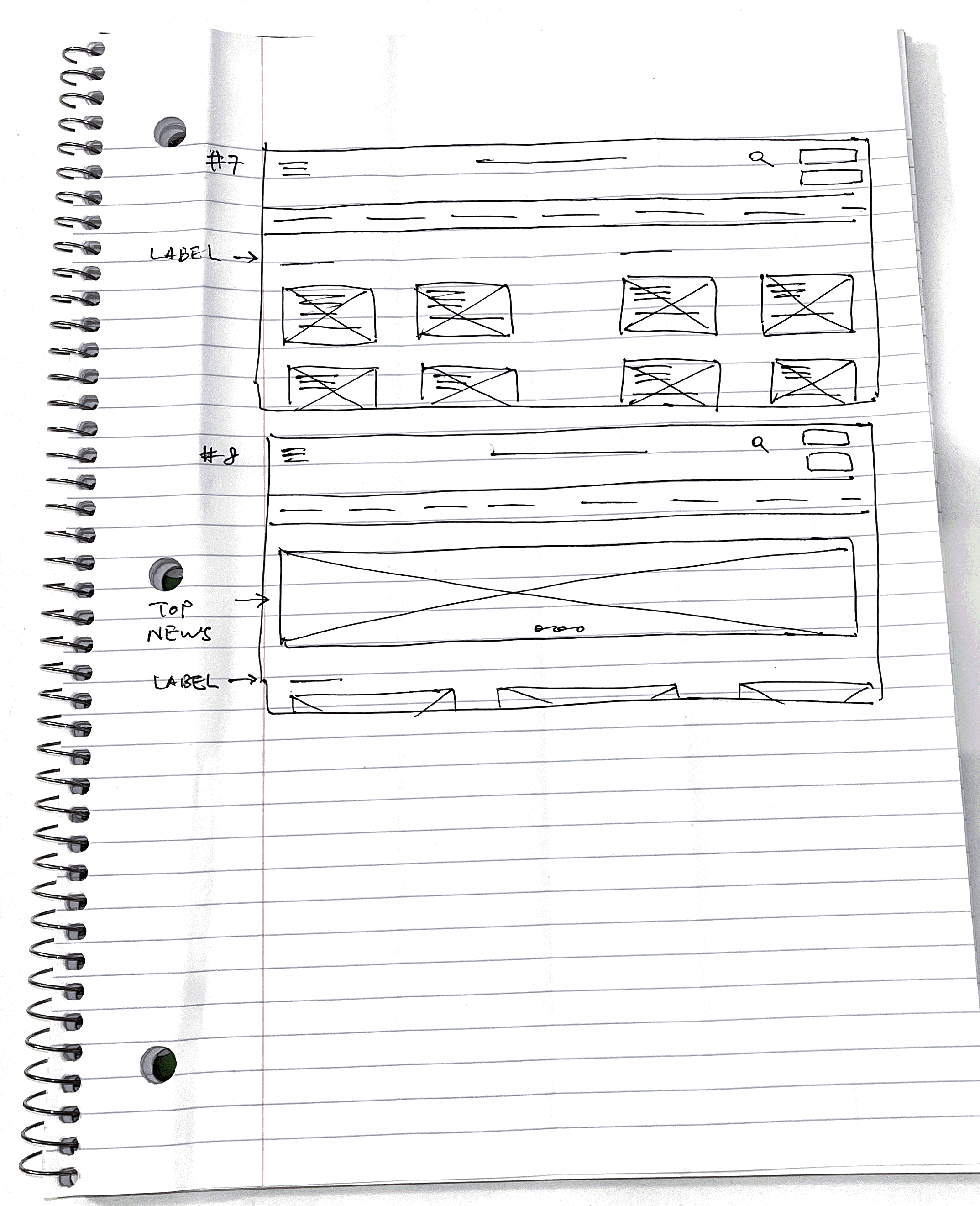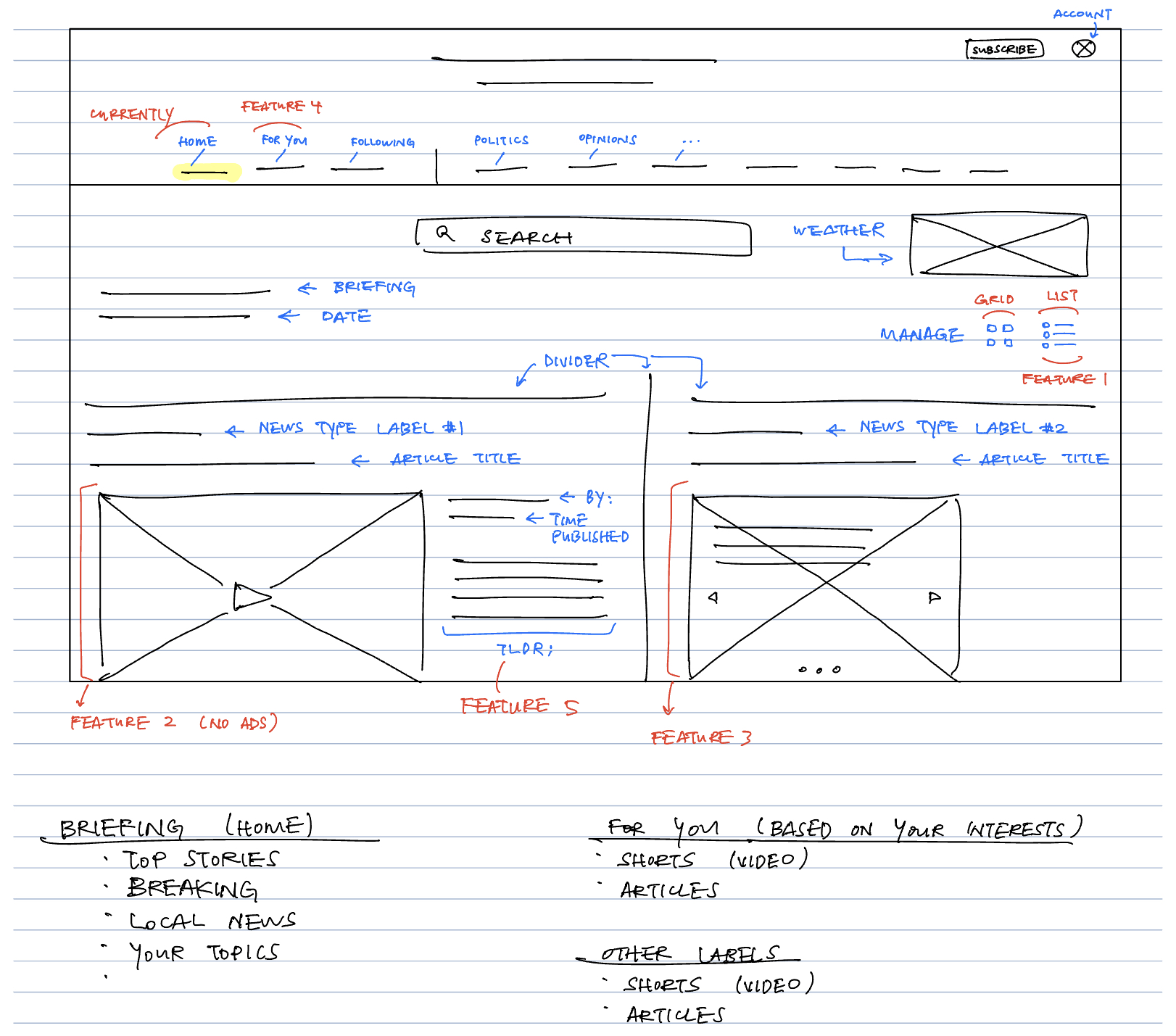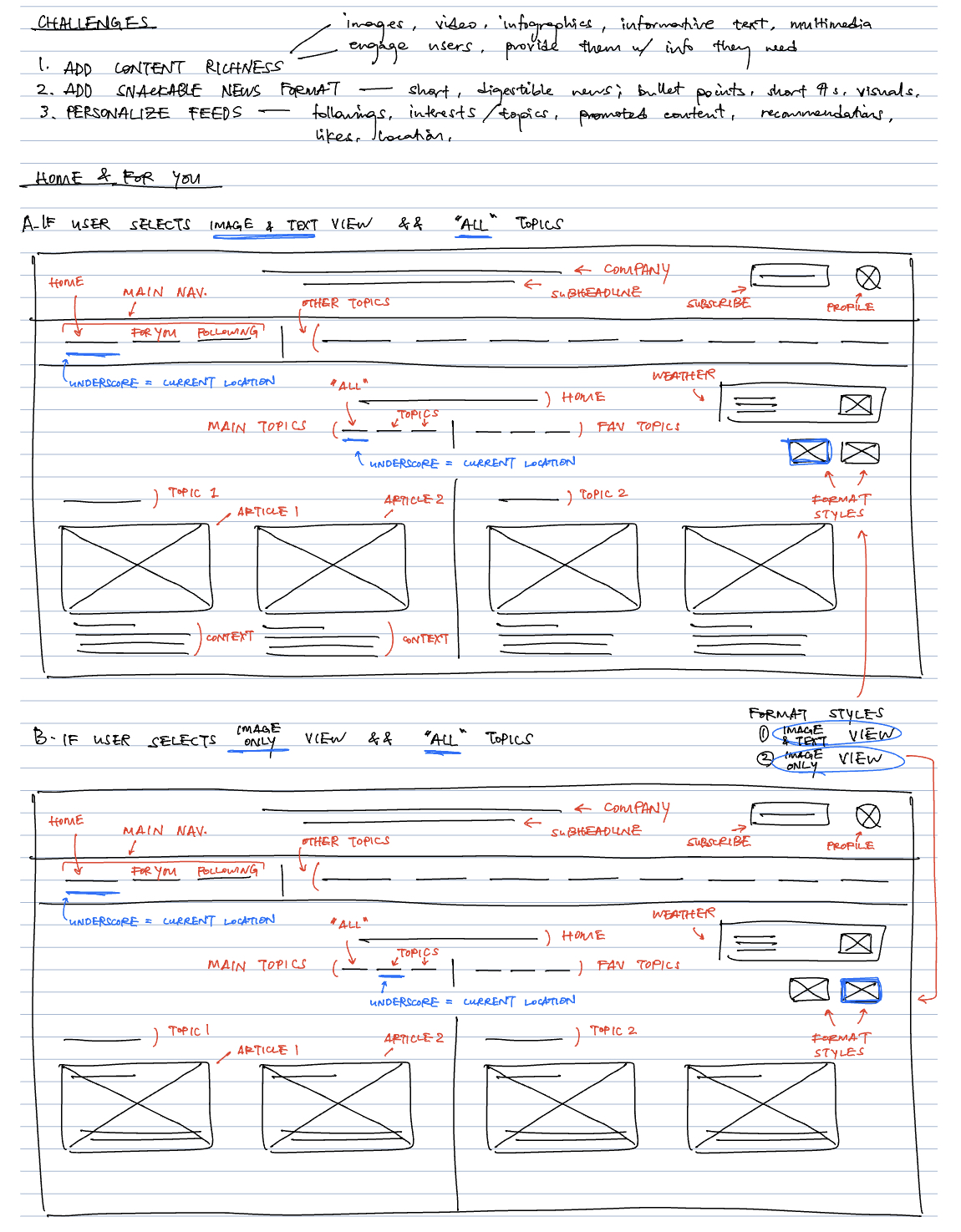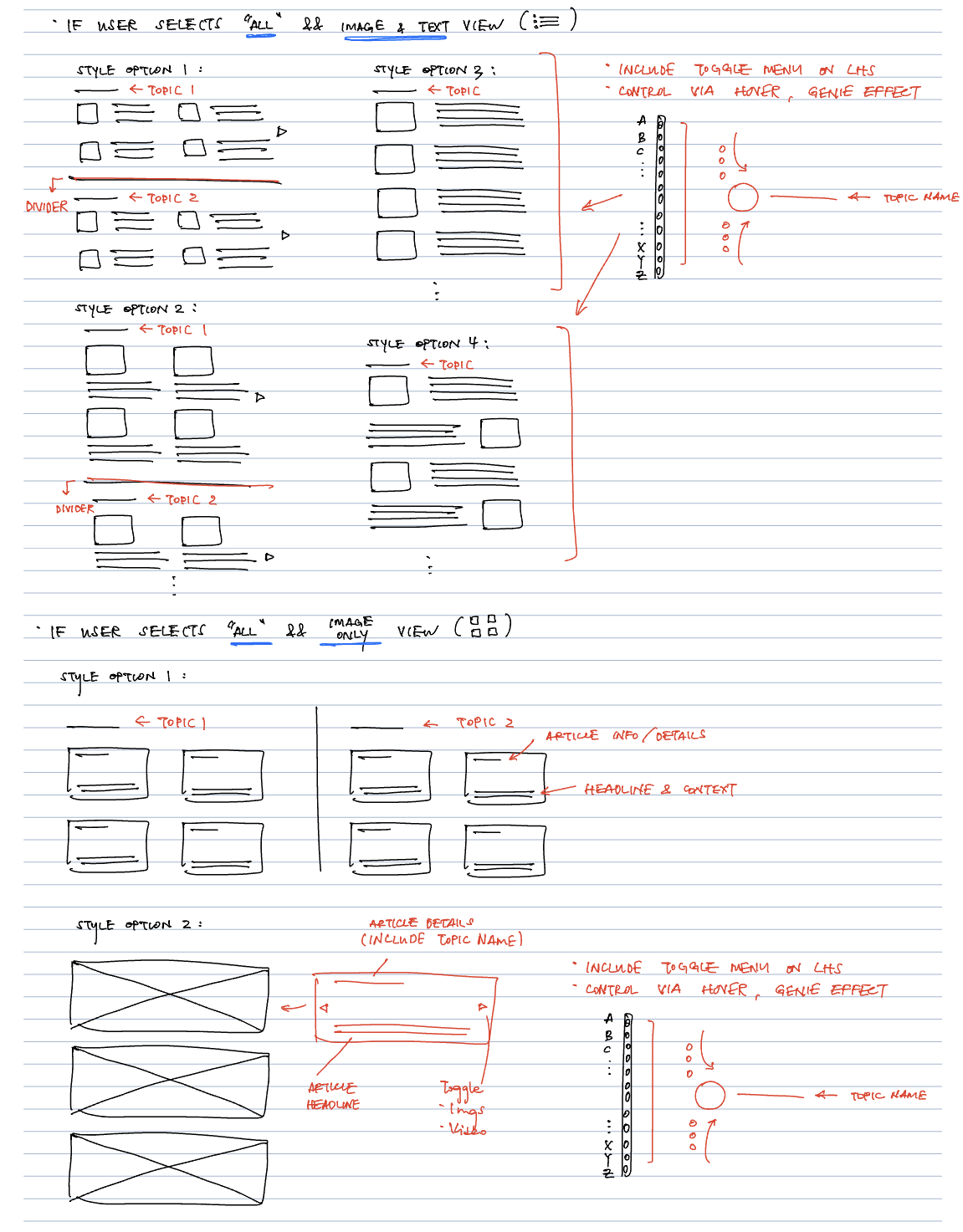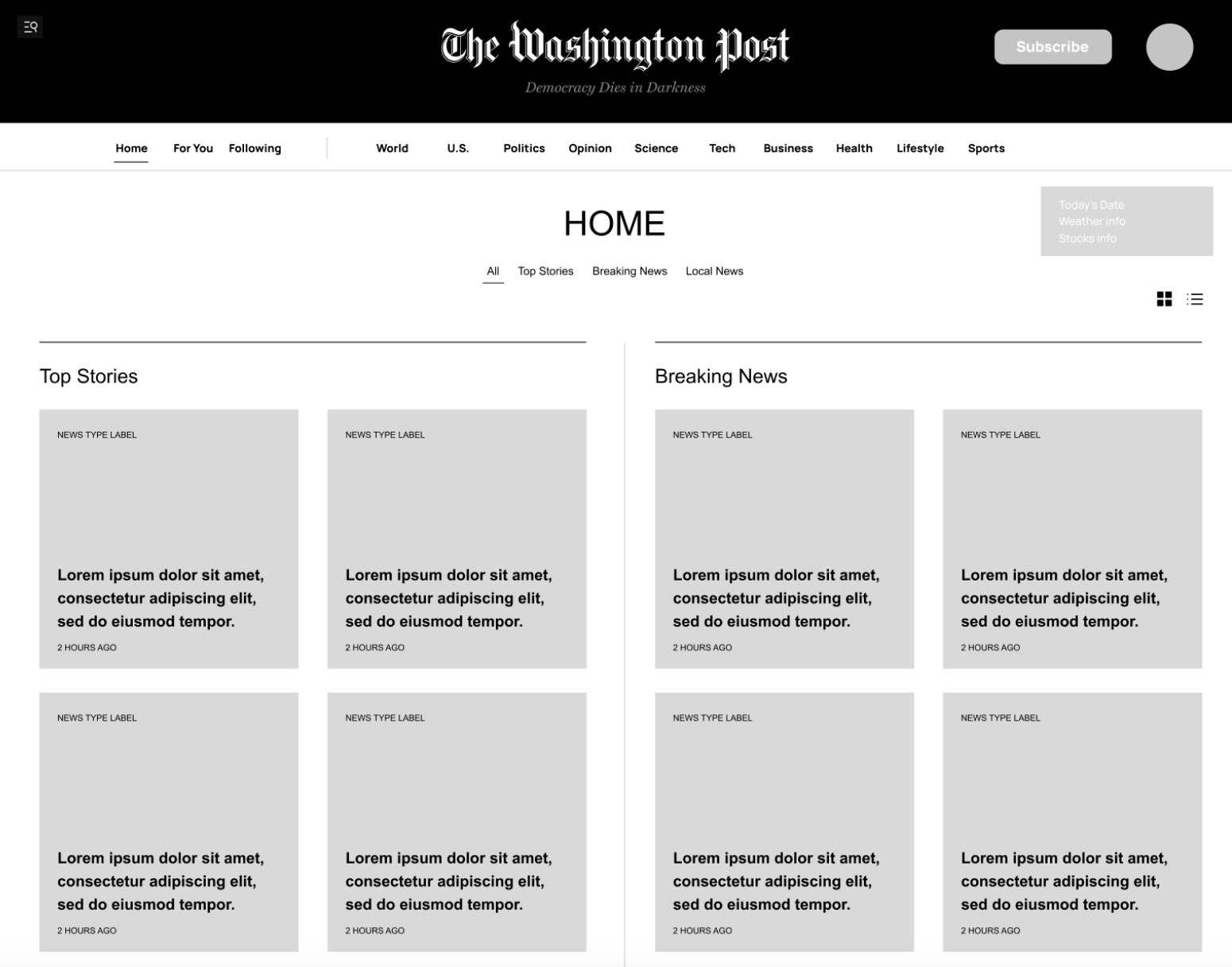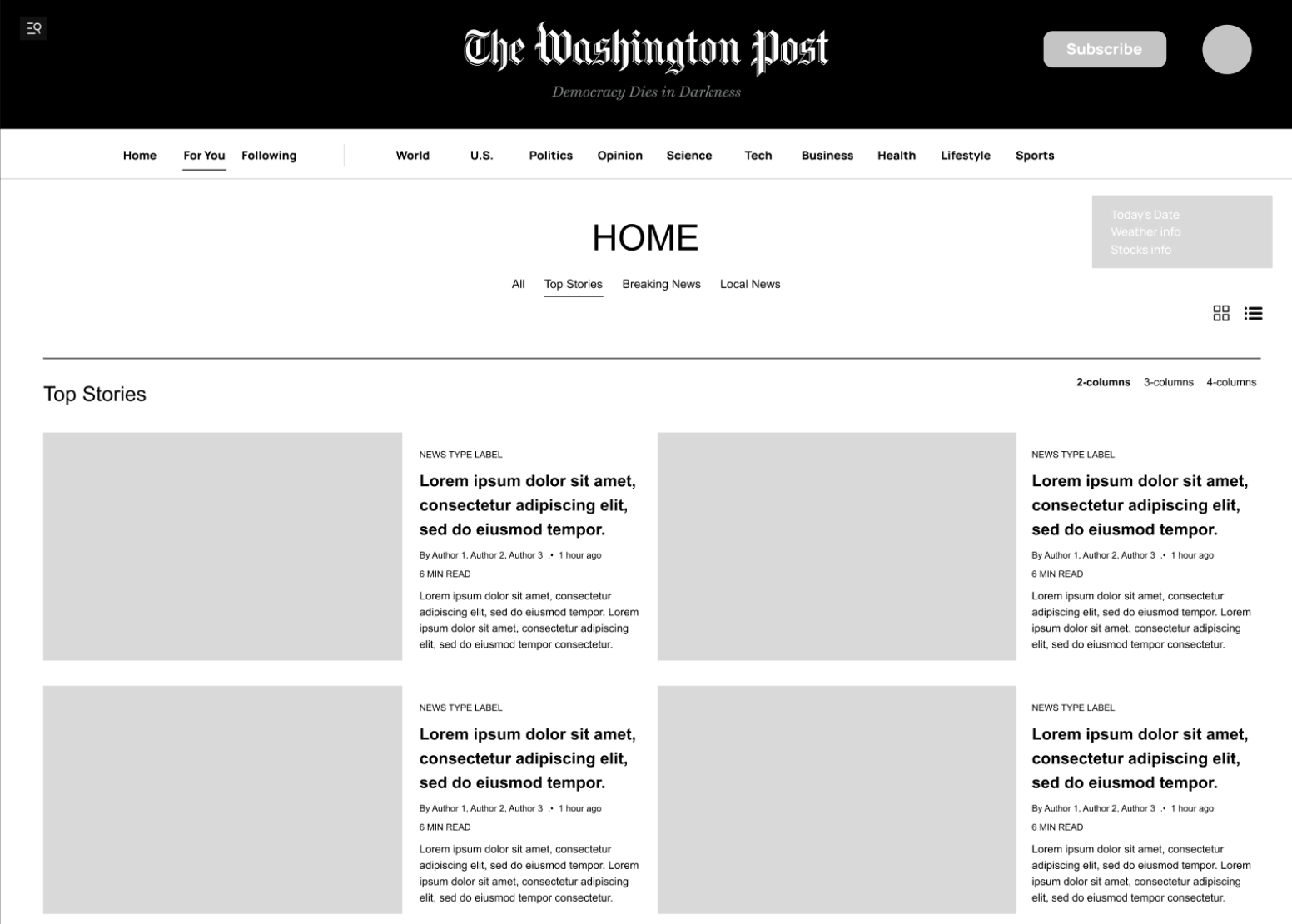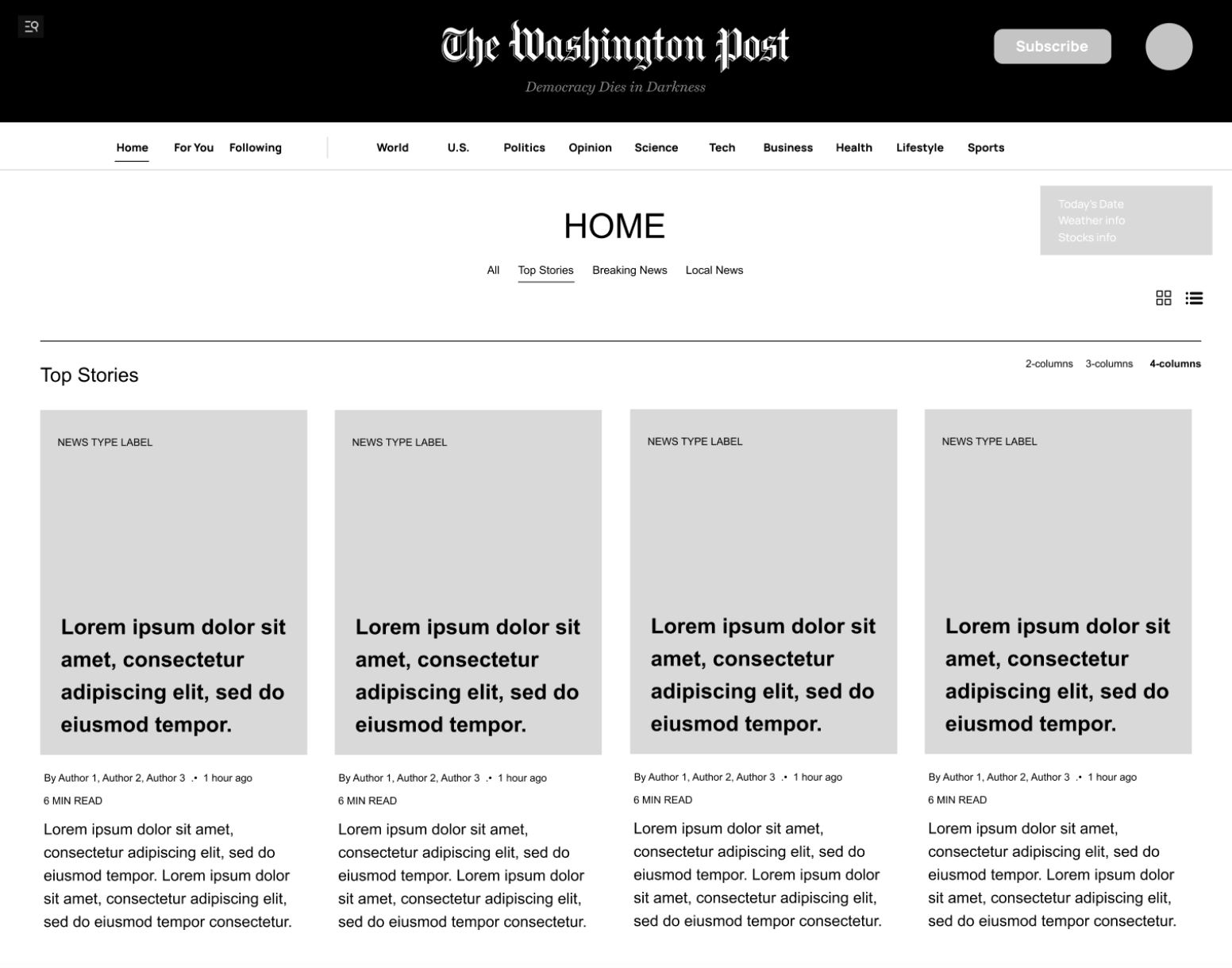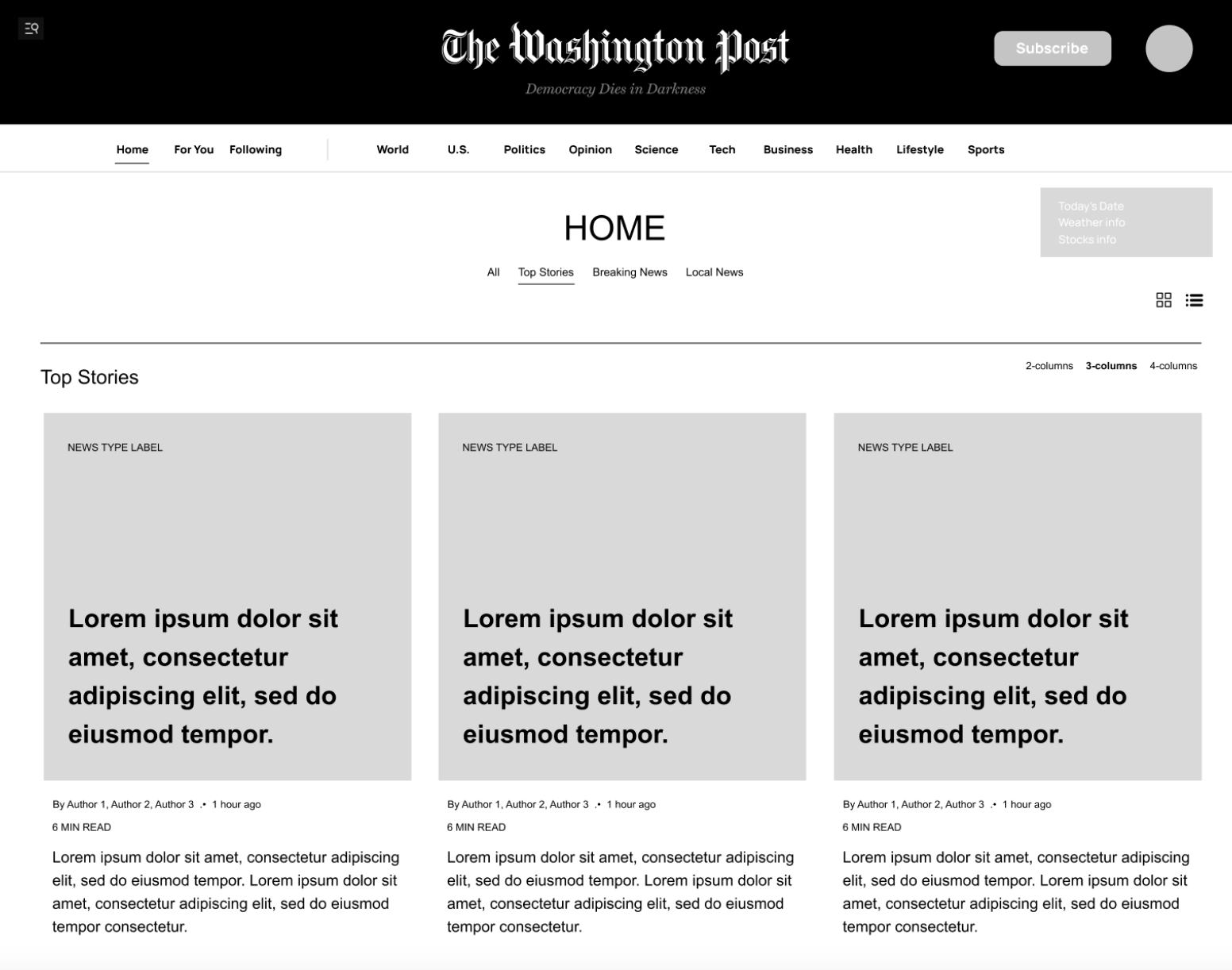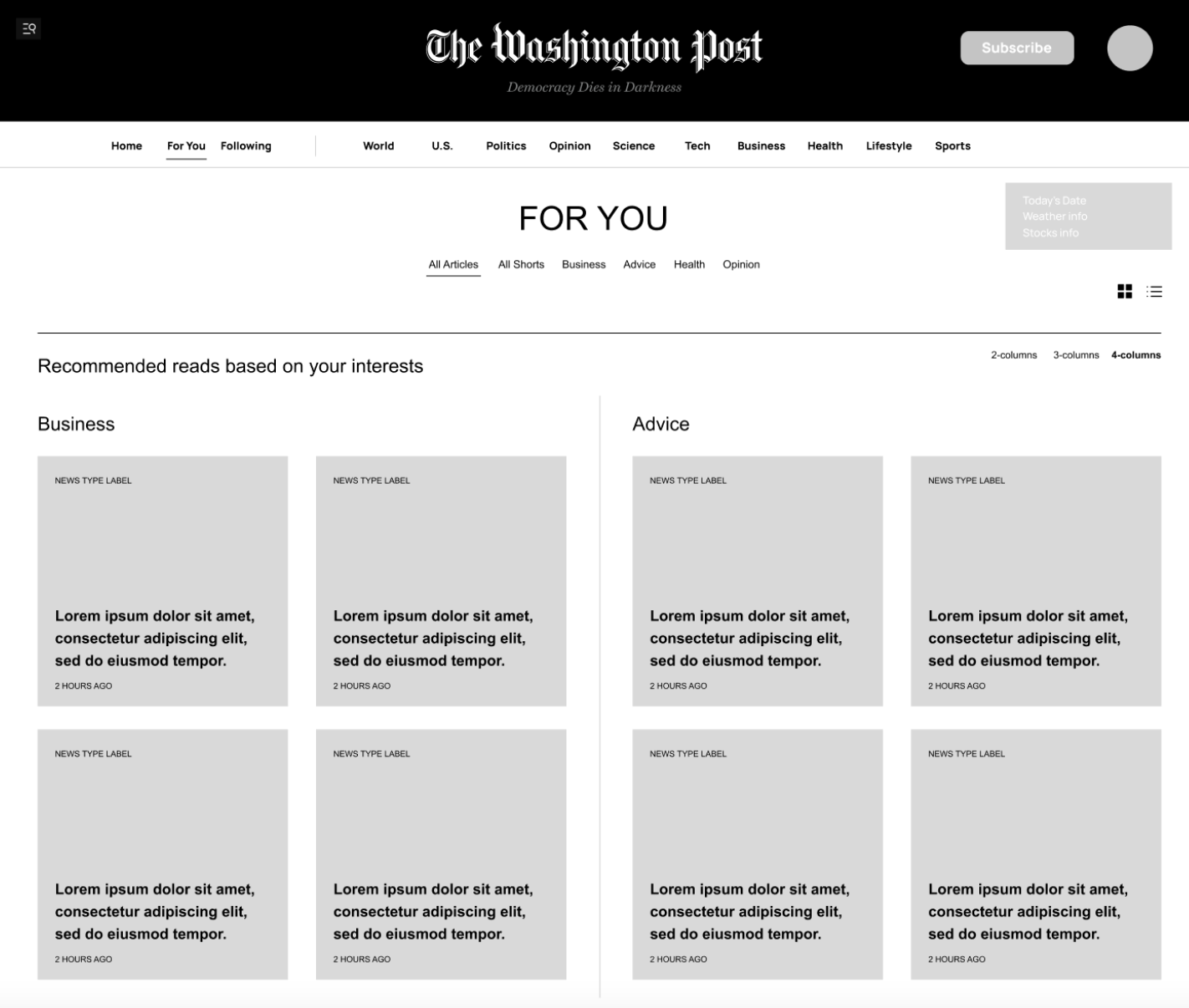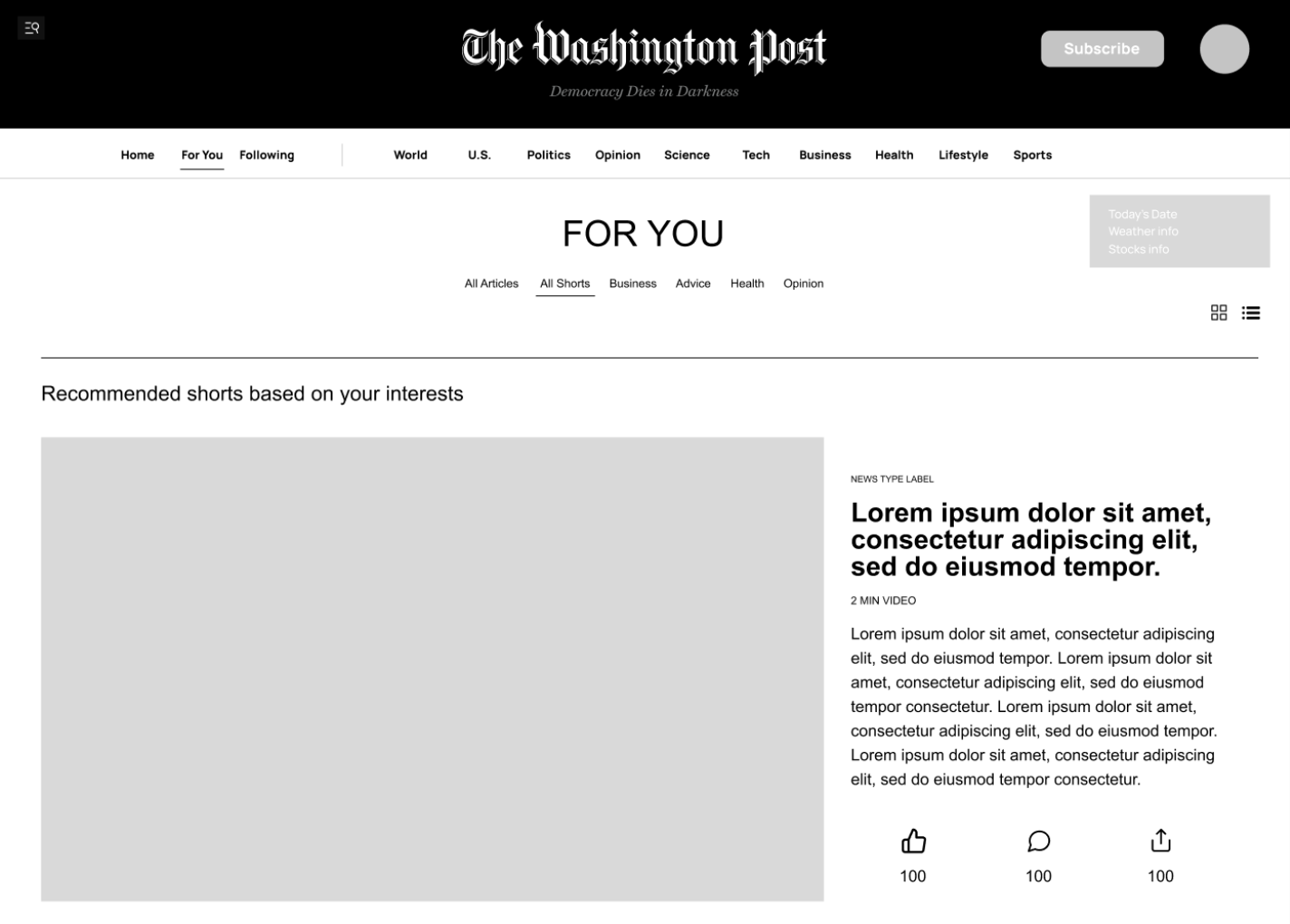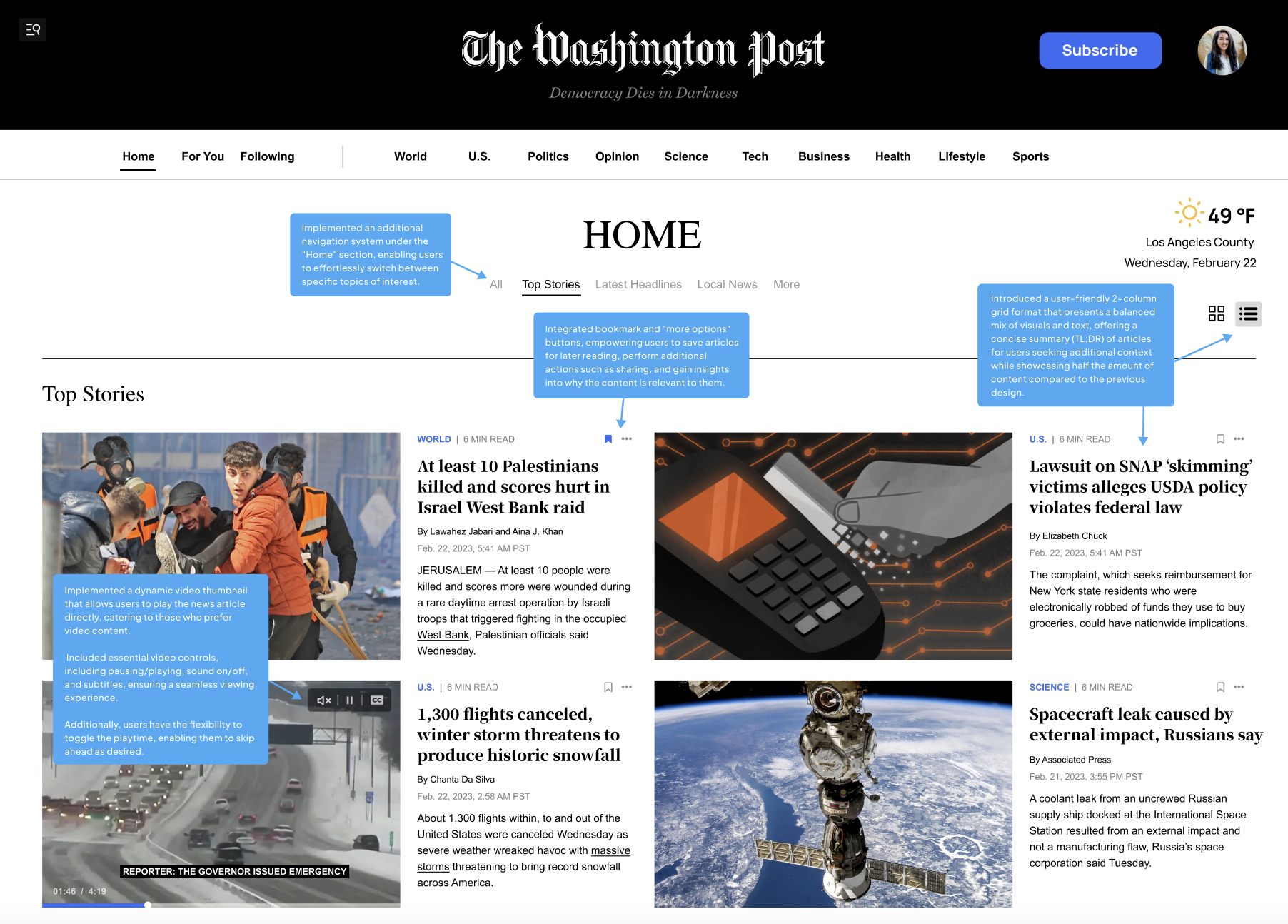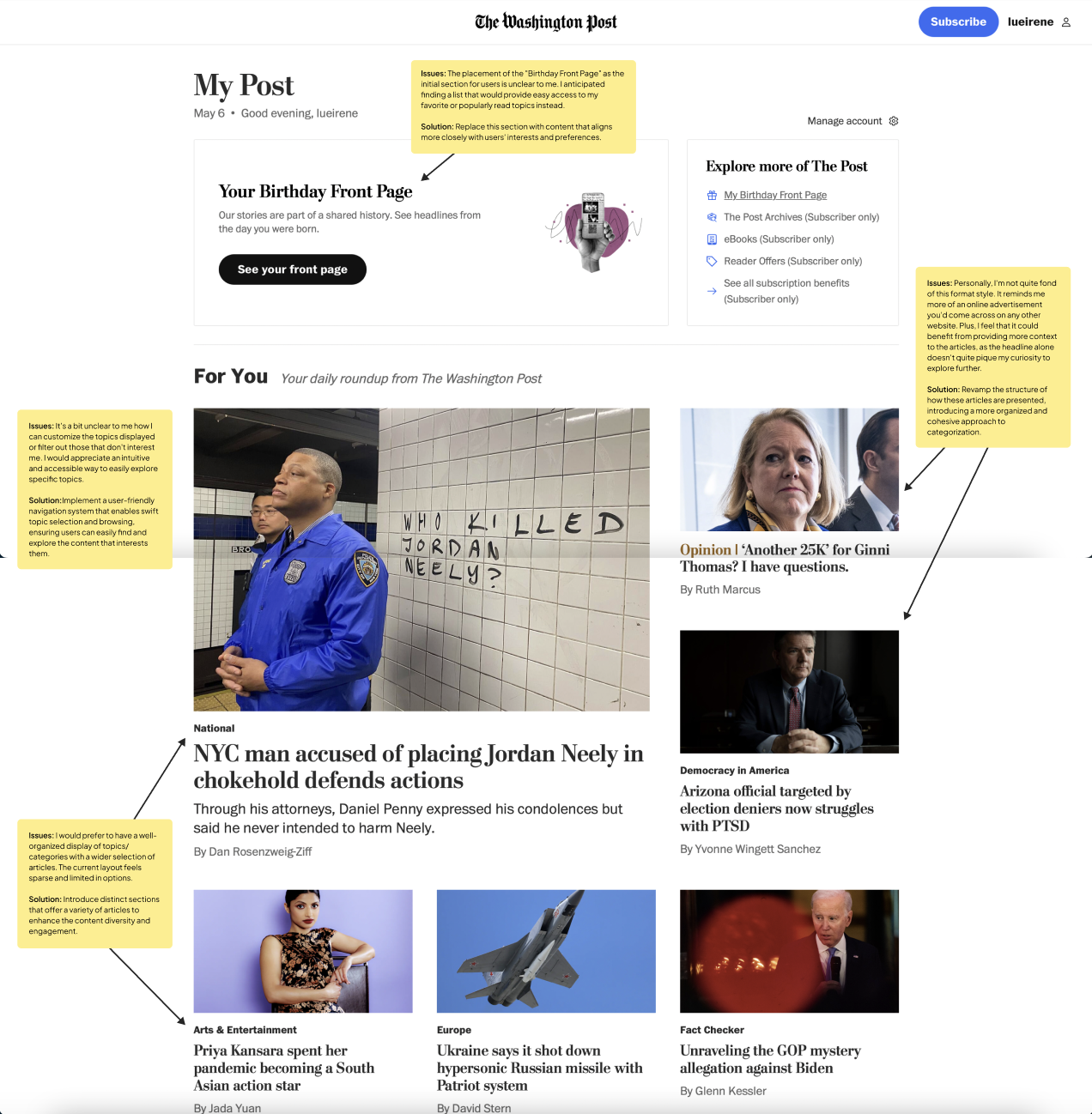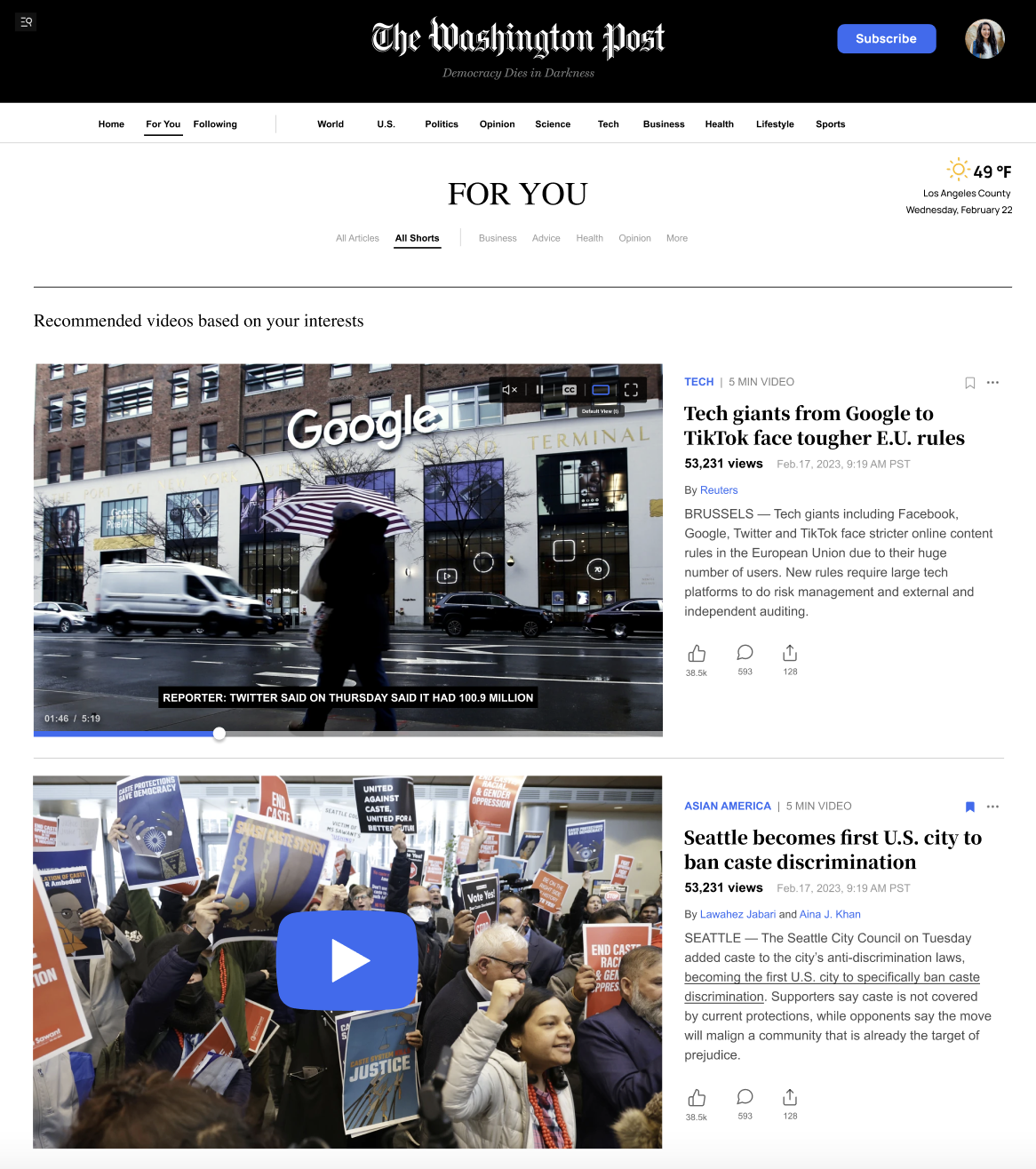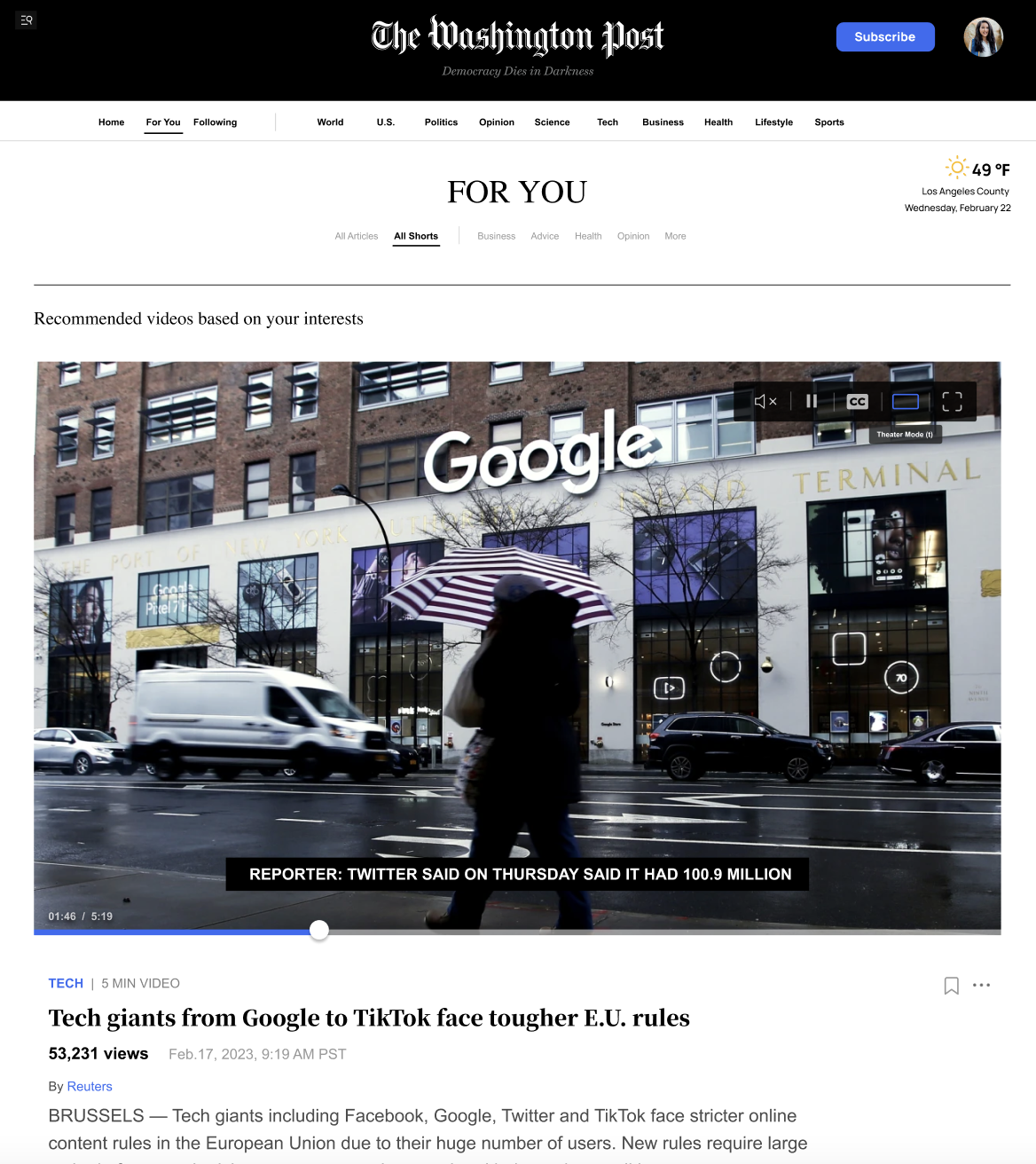PROJECT TIMELINE
In the design phase, I followed a goal-oriented strategy with a 3-week timeline, creating milestones weekly. Employing qualitative methods like user interviews and usability testing, I delved into user motivations and pain points. Alongside, quantitative research via surveys revealed broader trends and potential improvements.
KICKOFF
The Washington Post faces a challenge in engaging younger generations like Gen Z and millennials due to outdated design and content strategy, resulting in reader loss. This project addresses this by researching user needs, analyzing website elements, and implementing youth-focused improvements while preserving core values. The goal is to boost engagement, retain readers, and attract new ones. To begin, I posed three key questions:
-
Who is our user?
What are their backgrounds, behaviors, intents, and motivations?
-
What are our users' pain points and goals?
What are their needs, values, and frustrations?
-
What are our objectives?
What challenges will we focus on and address to improve our customers' online experience?
EMPATHY MAPPING
To gain a deeper understanding of The Washington Post's Gen Z and young millennial users, I immersed myself in their world, exploring their thoughts, emotions, behaviors, and needs through extensive research and interviews. By delving into their experiences, I aimed to gather valuable insights that would shape my assumptions mapping process, enabling me to identify and prioritize assumptions, hypotheses, and potential risks.
ASSUMPTIONS MAPPING
I crafted an assumptions map to untangle my assumptions about Gen Z users' preferred features, pain points, and their alignment with The Washington Post's mission. This analysis informed my decisions, ensuring alignment with the organization's goals.
Phase 1: Brainstorming
Phase 2: Mapping
CREATING PERSONAS
COMPETITIVE ANALYSIS
KEY OBJECTIVES
-
Restructure the Top-Level Navigation Hierarchy
Simplify the top-level hierarchy by removing any unnecessary or redundant categories and prioritize the most important and frequently accessed sections. Establish a clear taxonomy to create a consistent framework as well as improve findability, navigation, and content discovery.
-
Enhance Richness of Content
Incorporant additional visual aids to enhance the visual appeal and engagement of content. Break down information into consumable chunks and incorporate multimedia elements such as videos or interactive features to provide an immersive and interactive experience.
-
Provide Bite-Sized News
Deliver concise news updates presented in bite-sized, easily digestible formats to cater to busy users with limited time for lengthy articles.
-
Personalize Feeds
Improve the current layout of the For You page by tailoring to the interests and preferences of individual users to increase user engagement and satisfaction.
IDEATION
Generated multiple layout styles for the Home and "For You" pages using the Crazy 8's method and iteratively refined the designs.
MID-FIDELITY PROTOTYPING
Ideated multiple home and for you page styles with the intention of introducing more multimedia elements and breaking down articles into digestible pieces.
Left to right: 4-column grid, 2-column grid, 4-column list, 3-column list
Left to right: 4-column grid, 2-column grid, 1-column list
FINAL DESIGNS
HOME PAGE STRATEGY
[ original ]
HOME PAGE STRATEGY
[ Proposal ]
FOR YOU PAGE STRATEGY
[ original ]
FOR YOU PAGE STRATEGY
[ Proposal: Article Format 1 & 2 ]
FOR YOU PAGE STRATEGY
[ Proposal: "Shorts" Format 1 & 2 ]
CONCLUSION
For this project, my primary objective was to prioritize the needs and pain points of Gen Z and younger millennial users, aiming to enhance user engagement with The Washington Post. In parallel, I focused on improving the site's information architecture and content taxonomy to ensure a seamless and intuitive user experience.
